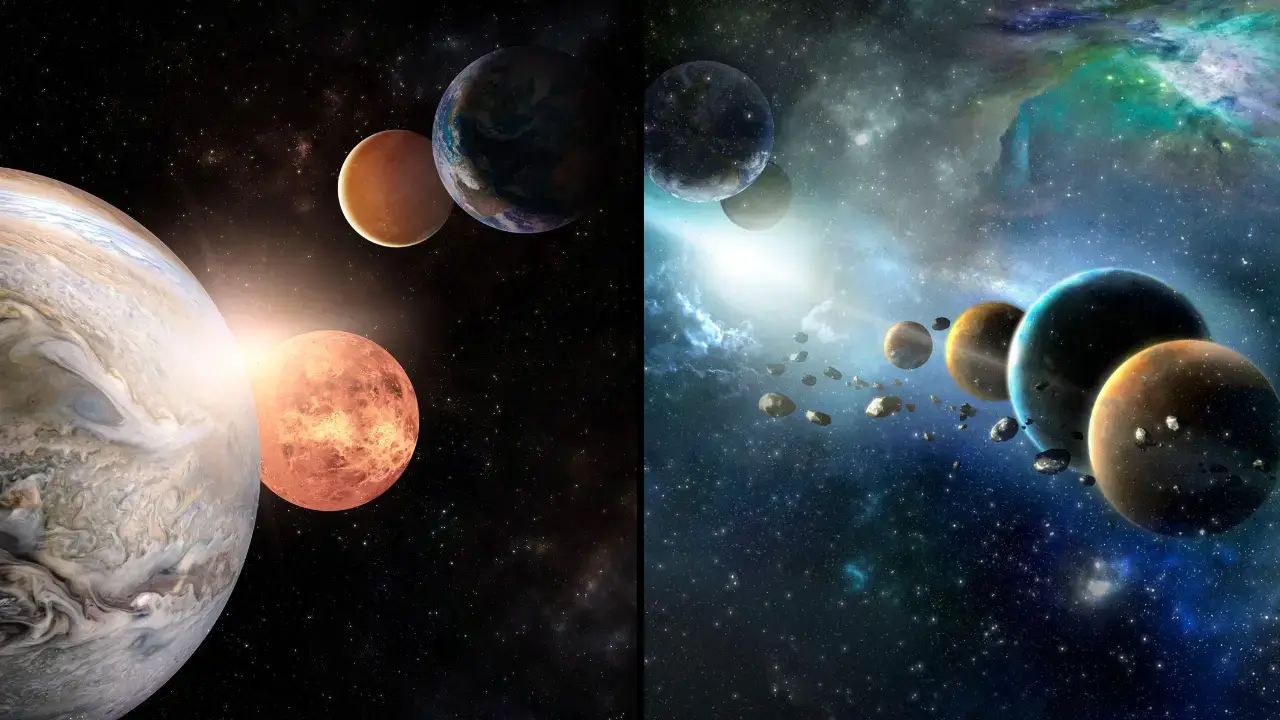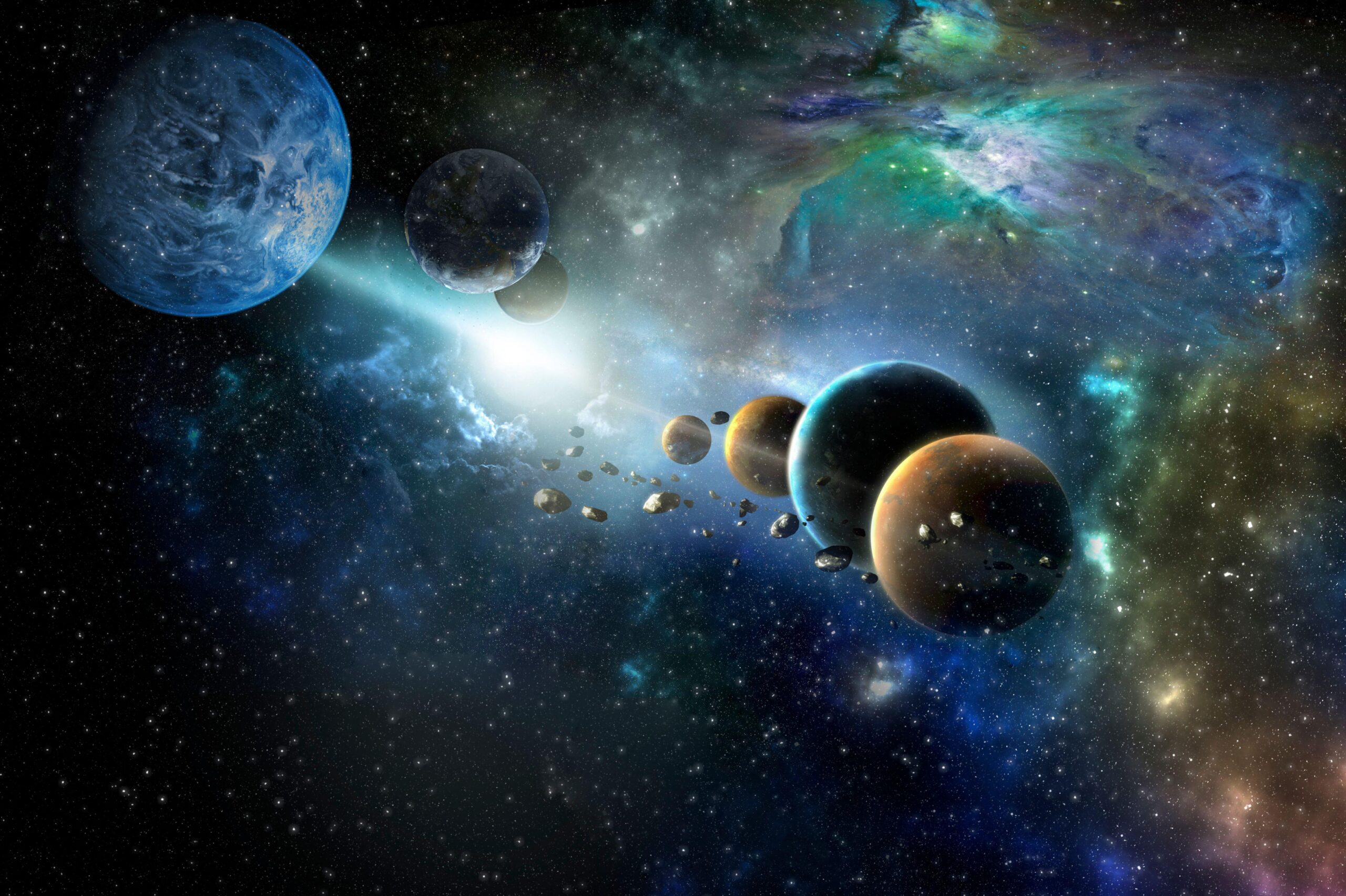
Credit: Alamy
Scientists Just Found A Planet That Should Not Exist
Scientists have just found a planet that should not exist.
The solar system is home to eight planets: Mercury, Venus, Earth, Mars, Jupiter, Saturn, Uranus, and Neptune.
Each planet has unique characteristics, ranging from rocky terrestrial worlds like Earth to gas giants like Jupiter and Saturn, offering a diverse array of environments and features within our cosmic neighbourhood.
But new research has shed light on a planet that shouldn’t actually exist.
Watch this pilot spot a UFO in the clip below…
In a surprising discovery, astronomers have found that a gas planet named Halla, located 520 light-years away from Earth, managed to survive the violent transition of its host star.
The star, named Baekdu, is larger than our sun and appears to have exhausted its hydrogen, burning through its supply of helium.
Normally, such a transition would destroy nearby planets, but Halla defied the odds, leaving scientists puzzled about its survival.
Related Article: NASA Tracking New Asteroid That Has A Chance Of Hitting Earth
Related Article: Jeff Bezos’ Girlfriend To Lead All-Female Space Expedition
The findings, published in the journal Nature, were based on observations made using NASA’s Transiting Exoplanet Survey Satellite.
The team observed that Baekdu had likely expanded into a red giant star, growing up to 1.5 times the current orbital distance of Halla before shrinking back to its current size.
“Engulfment by a star normally has catastrophic consequences for close orbiting planets,” said study co-author Dr Dan Huber, Australian research council future fellow at the University of Sydney and associate professor at the Institute for Astronomy of the University of Hawaii, in a statement.
“When we realised that Halla had managed to survive in the immediate vicinity of its giant star, it was a complete surprise.
“As it exhausted its core hydrogen fuel, the star would have inflated up to 1.5 times the planet’s current orbital distance – engulfing it completely in the process – before shrinking to its current size.”

The fact that the gas planet survived in such close proximity to its star was unexpected and raised questions about the mechanisms behind its resilience.
While our solar system has only one star, many stars in the universe exist as binary pairs.
Understanding the formation and fate of planets in these systems is an ongoing area of investigation for astronomers.
In the case of Halla, further observations were conducted using the W M Keck Observatory and the Canada-France-Hawaii Telescope, confirming the stability of its orbit.
Scientists are now exploring possible explanations for Halla’s survival.
Gas giants like hot Jupiter exoplanets typically migrate closer to their host stars over time, but Halla’s situation may be different due to its rapidly evolving star.
The researchers question whether the planet could withstand being absorbed by an expanding red giant star.
Related Article: ‘Time Traveller’ Claims Huge Meteor Will ‘Bring Aliens To Earth’ In Next Few Months
Related Article: NASA Confirms Launch Date To Asteroid That Could Make Everyone On Earth A Billionaire
One hypothesis suggests that the Baekdu system may have originally consisted of two stars, similar to the fictional planet Tatooine from Star Wars.
If the stars merged, it could have prevented either of them from expanding enough to engulf the planet. In this scenario, the stars would have interacted and fed off each other.
Another possibility is that Halla is a relatively young planet, formed from a gas cloud resulting from a catastrophic collision between the two stars.
This would make it a second-generation planet created within the system.
The survival of Halla presents an intriguing puzzle for astronomers, challenging existing theories about the fate of planets in close proximity to evolving stars.
Further research and observations will be necessary to unravel the mysteries surrounding this remarkable gas planet and its resilient existence.
Watch our Video of the Day below…